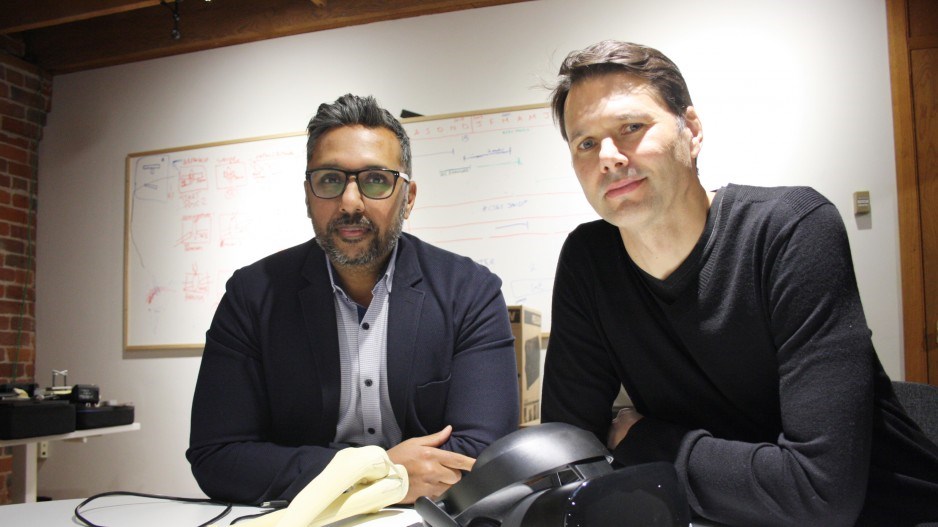While pilots can crash and burn in a flight simulator, surgeons haven’t been afforded the same luxury of confronting life-threatening – and instructionally valuable – problems during simulated surgery.
“Unless something dramatic happens during the cadaveric experience, we don’t really know how we did,” said orthopedic surgeon Danny Goel, referring to the age-old method of practising surgery on cadavers.
Goel aims to improve training for surgeons with a virtual reality (VR) enterprise that’s caught the eye of a global network of more than 20,000 surgeons and scientists in orthopedics and trauma.
Vancouver-based VR developer Precision OS, which Goel co-founded in 2017, secured $2.3 million in funding late last year from AO Invest and other undisclosed investors.
AO Invest is the venture capital arm of the AO Foundation, a non-profit orthopedic research and educational organization based in Switzerland with membership in the tens of thousands.
AO Invest chairman Michel Orsinger said his organization evaluated several VR companies before dipping its toes into the technology by investing in Precision OS.
“Precision OS’s technology convinced us through its accuracy, quality and overall approach to education in VR,” he said. “The feel of the product is extremely impressive.”
CEO Goel said Precision OS’s VR modules have been effective enough to induce stress responses in residents and trainees who’ve donned the headgear.
“And that gives us an indication that when they’re doing this they feel as though their decisions are going to be measured, and that’s exactly what we want to do,” said Goel, who also trains surgeons in the operating room.
“We are trying to mimic and simulate exactly the experience in the operating room, which would be the patient’s setup, the anatomy, the approach, as well as the patient’s pathology.”
That process includes being able to use data from real patients or their pathology to help instruct medical students through VR.
Goel added that throughout the development process he and co-founders Colin O’Connor and Rob Oliveira wanted to emulate the idea of a flight simulator, “which is highly immersive, allows you to make a decision, realize the impact of that decision whether it be a fail or a success and then re-evaluate your decision.”
Duncan Stewart, Deloitte Canada’s technology, media and telecommunications director of research, told BIV he believes the consumer market for VR technology is limited because the headgear can be uncomfortable.
But he said enterprise applications hold much more potential.
A December 2018 IT Intelligence Markets report estimates the global market for VR in health care is set to grow at a compound annual growth rate of 53% from 2018 to 2023.
The Surrey-based Health and Technology District partnered with VR firms Conquer Experience and Stambol Studios to launch a workspace in May 2018 allowing other companies and entrepreneurs to collaborate on VR in health-care projects.
Conquer Experience cut its teeth in this arena by working with Kwantlen Polytechnic University to develop VR training for nurses.
Precision OS is also developing strategic partnerships with public education organizations.
Next up, though, is the development of a preoperative planning tool giving surgeons the ability to introduce images of a patient’s anatomy to the software prior to a procedure.
The tool still needs to hop through some regulatory hoops, but Goel estimates it will be available in less than a year.
“It takes actual patients’ CT [computerized tomography] scans that allows you to interact with them either right before or the day before you’re going to do this procedure,” he said. “Our software would provide them with some valuable information they could take and use in the operating room.”




